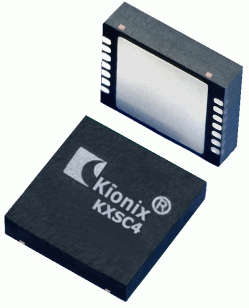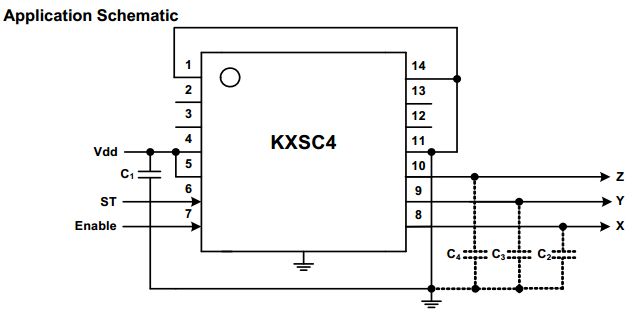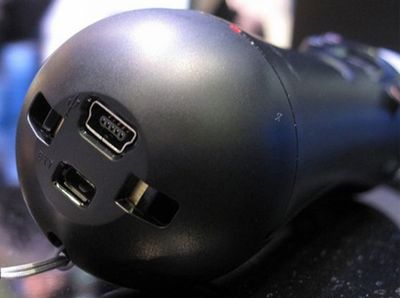Move Motion Controller
Move Hardware[edit | edit source]
CECH-ZCM1 (CECH-ZCM1U, CECH-ZCM1E, CECH-ZCM1J, CECH-ZCM1H, CECH-ZCM1M)
MIC listings:
- 007WWCUL0522 June 29, 2010 (CECH-ZCM1J)
- 007WWCUL0630 March 8, 2011 (CECH-ZCM1J)
- 007WWCUL0489 March 30, 2010 (CECH-ZCM1J / CECH-ZCM1JD)
Anatel:
- 2090106223 13/01/2012 (CECH-ZCM1M)
- Main board reference
- YCON2_1.01 (dissassembled photos ---> http://www.ifixit.com/Teardown/PlayStation-Move-Teardown/3594/1)
- YCON2.5_1.03 (different Bluetooth chip, different 2-axis gyro "PR425A 2117 AEWEP")
- Note some components and testpoints (TP) are different between models.
STM32F103 VBT6 Y (ARM Cortex-M3 32bit@72MHz SRAM20Kb FLASH128Kb RISC Microcontroller)[edit | edit source]
U19
http://www.st.com/mcu/devicedocs-STM32F103VB-110.html
| Reference | STM32 (Device family) | F (Procut type) | 103 (Device subfamily) | V (Pin count) | B (Flash memory size) | T (Package) | 6 (Temperature range) | Y (Options) |
|---|---|---|---|---|---|---|---|---|
| Description | STM32= ARM-based 32-bit microcontroller | F= general-purpose | 103= performance line | T= 36 pins C= 48 pins R= 64 pins V= 100 pins |
8= 64 Kbytes B= 128 Kbytes |
H= BGA T= LQFP U= VFQFPN |
6= -40 to +85 ºC 7= -40 to +105 ºC |
Unknown |
- Firmware
- Board YCON2_1.01 (STM32F103) Original Firmware Dump (region unknown) ---> http://www.eissq.com/ps3_move/files/1e93d333d39a9b0d43a47489503859a2-7.html
- Based on RTOS by eForce Co.,Ltd. (http://www.arm.com/community/partners/display_company/rw/company/eforce-co-ltd/)
- Firmware dump analisys (wrote by nico @ Kenn Sebesta blog)
Actually, there seems to be 3 vector tables: 8000000 (size 0x0040) NVIC vectors 8000800 (size 0x0094) Bootloader vectors 8002800 (size 0x0130) Application vectors The subroutine at 8000040 seems to call either the bootloader reset vector (at 8000142) or the application reset vector (at 800016E). The thing is, the shortened bootloader vectors (provided this is actually the bootloader code), does not contain any I2C or UART interrupt vectors, and only USB_LP_CAN_ RX0 vector seems to contain active code (as far as communication is concerned). Seems like the CPU and Bluetooth module use some form of UART to communicate, is that correct ? ... .. . The first thing to look for is the base address of the BIN file in memory, and further what the memory map looks like. Kenn has already provided this info in his example project, but these can be extracted from the STM32 datasheet also. We know that the first byte of the BIN file maps to address 0x08000000 in memory. We know that internal SRAM start at 0x20000000. Second thing is to locate the vectors table (see STM32 datasheet) and the reset vector, because it gives you the entry point of the firmware and other useful info. The vectors table is also relocatable in this case (register SBC_VTOR, STM32 programming manual page 134), so there may be multiple vectors tables (and there is). The vectors table is actually a big jump table. I'm using the following trick to find other tables (be it vectors or switch / case jump tables). We know that addresses are 32 bit (ARM) and highest byte is always 0x08, so we can use a simple hex dump of the BIN file and search using the regular expression "08 .. .. .. 08" (dot meaning any single character). If you use a text editor with search results highlighting (vim for example), then jump tables just catch your eye. There are not so many of them. I used this technique to find the three vectors tables listed earlier. They're distinctive because of their first 32 bit word (0x20000400 which oughts to be the address of the stack top according to the STM32 datasheet). The vectors table also provides you with pointers to interesting subroutines. If Bluetooth is what you're looking after, just follow IT vector number 39 (USART3) since we know thanks to Kenn that STM32 and Bluetooth chips communicate via UART number 3. Then try to figure out what the firmware should look like: when a Bluetooth output report is coming to the Move, an interrupt is generated in the STM32, the input report is fetched serially from the Bluetooth chip into some buffer (or ring buffer), and the buffer is parsed, either synchronously in the IT handler itself, or a message is sent from the IT handler to some lower priority task. Difficulty is to figure out the relevant tasks and to identify them in the disassembled code. The jump tables trick can also be used to identify the code that parses Bluetooth output reports (faster). It's very likely that such a jump table is used to call a specific Bluetooth command handler for each Bluetooth command supported by the Move. In that case the jump table is a table of function pointers. The idea is to list the jump tables, then try to find one in the same region as the IT handler. The start address of the jump table should be present in some code that can be traced back to the IT handler. This provides info on how many Bluetooth commands are supported, which ones and eventually what they're doing (after a fair amount of disassembly, I admit).
- Bootloader
- STM32 Arm-Cortex bootloader: http://www.micromouseonline.com/2009/05/08/stm32-arm-cortex-bootloader/?doing_wp_cron=1348086547.3716659545898437500000
- Sony bootloader: there are two sections in the beginning that are blanketed by empty flash: one from 0x00000 to 0x006B7 and the other from 0x00800 to 0x027BB. My guess is that the first section is the NVIC table and that the second is a bootloader. calibration data stored at last 0x800 bytes starting from 0x0001F800 ? (from Kenn Sebesta blog)
- JTAG programmer
3.3V and http://www.amontec.com/openocd.shtml compatible e.g: "bus pirate" https://www.sparkfun.com/products/9544
First of all, please save your original firmware image. Even if you don't plan to ever use your Move as a game controller again, this is a good test if your JTAG connection works. It's also supposed that the firmware contains device specific calibration values. If you replace your original firmware with firmware from another Move, it may not work as expected. Newer Moves may have code protection enabled. You can easiely disable code protection via OpenOCD but this will erase flash and make it impossibe to save the original firmware.
To make a dump of the original firmware run:
> dump_image my_original_move_firmware.bin 0x8000000 0x20000 dumped 131072 bytes in 6.391000s (20.028 kb/s)
To write a dump run:
> flash write_image erase my_original_move_firmware.bin 0x8000000 auto erase enabled wrote 131072 bytes from file myoriginal_move_firmware.bin in 10.704000s (11.958 kb/s)
- Buses:
- 3x USART (bluetooth @ 230,400 baud,...)
- 2x SPI
- 2x I²C (magnetometer,...)
- 1x USB
- 1x CAN
- Pinout
STM LPR425AL (2-Axis Gyroscope)[edit | edit source]
The 2-axis gryoscope (likely an STM LPR425AL) is an analog sensor measuring rotation along the x- and y-axes
Is covered with a metal shield to avoid interferences (marked as 067S8 in some models), this makes his identification dificult
Y5250H 2029 K8QEZ (Z-Axis Gyroscope)[edit | edit source]
alt.no.: Y5250H 2005 4Y84AQ
alt.no.: Y5250H 2024 GPECQ
U14
Kionix KXSC4 (3-Axis Accelerometer)[edit | edit source]
alt.no.: Kionix KXSC4-XLU 90831 3909
alt.no.: Kionix KXSC4 10115 2010
alt.no.: Kionix KXSC4 10227 2410
U12
Tri-Axis, 1.5g – 6g, Low Power Analog, 5x5x1.2mm DFN
The KXSC4 is a high-performance, low-power, analog output tri-axis accelerometer. This accelerometer is delivered in a 5 x 5 x 1.2 mm, 14-pin, DFN package with an operating temperature range of -40°C to +85°C.
The KXSC4 has a full-scale output range of ±2g and operates from a 1.8 V to 3.6 V DC supply (factory-programmable).
- Features:
- Factory-programmable, internal low-pass filter
- Low current consumption: 0.05 µA in standby, 230 µA at full power
- Factory-programmable ±1.5g to ±6g range
- Supply voltage range: 1.8 V to 3.6 V
- Analog output
- Embedded features
- Motion detection
- Orientation detection: report changes in face up, face down, +/- vertical and +/- horizontal orientation
- Self-test function
- RoHS compliant
http://www.kionix.com/accelerometers/kxsc4
http://www.kionix.com/sites/default/files/KXSC4%20Product%20Brief.pdf
http://www.kionix.com/sites/default/files/KXSC4-2050%20Specifications%20Rev%203.pdf
- Pinout
| Pin # | Name | Description | Move Board Notes |
|---|---|---|---|
| 1 | GND | Ground. | |
| 2 | N.C | Not Connected Internally. | |
| 3 | N.C | Not Connected Internally. | |
| 4 | Vdd | Power supply input. Decouple this pin to ground with a 0.1uF ceramic capacitor (C1). | Decoupled with capacitor C42 |
| 5 | Reserved | Reserved (must be "Pulled-up to VDD" for normal operation). | Connected to pin 4 |
| 6 | ST | Self Test ("Pulled-down to GND" = normal operation. "Pulled-up to VDD" = self-test mode). | Connected to ? |
| 7 | Enable | Enable pin ("pulled-up to VDD" = normal operation. "Pulled-down to GND" = standby). | Connected to ? |
| 8 | X output | X-channel analog output (Optional filter capacitor, C2). | Connected to MCU pin# 24 (PA1). |
| 9 | Y output | Y-channel analog output (Optional filter capacitor, C3). | Connected to MCU pin# 18 (PC3). |
| 10 | Z output | Z-channel analog output (Optional filter capacitor, C4). | Connected to MCU pin# 26 (PA3). |
| 11 | GND | Ground. | |
| 12 | N.C | Not Connected Internally. | |
| 13 | N.C | Not Connected Internally. | |
| 14 | GND | Ground. |
- Output
1.6V is the zero output. The accelerometers have a scale of about +0.250V increment for each "g". Assuming that the chip is able to go full scale from 0V to 3V, this gives an absolute output of +-6g (this range is a configuration programmable at factory)
AKM AK8974 (3-Axis Magnetic Compass)[edit | edit source]
alt.no.:AKM8974 948D
alt.no.:AKM8974 008F
U13
Asahi Kasei Microdevices http://www.akm.com/
There is no oficial documentation available about 8974 model, the most closer models (from 897 series) are 8973 and 8975
- 8973
http://www.alldatasheet.com/view.jsp?Searchword=AK8973
- 8974
Used in Nokia phones models: 2710c, 5730, 6210n, 6710, 6720c, 6720, C6-01, E72, N8-00, N86, N97, N97mini, and N9 MeeGo
http://memsblog.wordpress.com/2009/12/03/nokia-beats-apple-to-compass-in-phone/
- 8975
http://www.asahi-kasei.co.jp/akm/en/product/ak8975bc/ak8975bc.html
- Pinout
| Pin # | Name | Description |
|---|---|---|
| 1 | ||
| 2 | ||
| 3 | ||
| 4 | ||
| 5 | ||
| 6 | ||
| 7 | ||
| 8 | ||
| 9 | ||
| 10 | ||
| 11 | ||
| 12 | ||
| 13 | ||
| 14 | ||
| 15 | ||
| 16 |
ALPS 503A (Radio Module)[edit | edit source]
Cambridge Silicon Radio BC4RE A16U (Bluetooth transmitter)[edit | edit source]
U8?. Inside ALPS 503A BT module
http://www.csr.com/products/technology/bluetooth
- Pinout
| Pin # | Name | Description |
|---|---|---|
| 1 | ||
| 2 | ||
| 3 | ||
| 4 | ||
| 5 | ||
| 6 | ||
| 7 | ||
| 8 | ||
| 9 | ||
| 10 | ||
| 11 | ||
| 12 | ||
| 13 | ||
| 14 | ||
| 15 | ||
| 16 | ||
| 17 | ||
| 18 | ||
| 19 | ||
| 20 | ||
| 21 | ||
| 22 | ||
| 23 | ||
| 24 | ||
| 25 | ||
| 26 | ||
| 27 | ||
| 28 | ||
| 29 | ||
| 30 | ||
| 31 | ||
| 32 | ||
| 33 | ||
| 34 | ||
| 35 | ||
| 36 | ||
| 37 | ||
| 38 | ||
| 39 | ||
| 40 |
LED2 (High Power RGB LED)[edit | edit source]
6 pins surface mounted RGB 2^24
- Soldered to the board with a ribbon cable (no connectors) with 4 lines marked as:
- LED_B
- LED_G
- LED_R
- LED_4R5 (VDD line)
TPS63030 (High Efficient Single Inductor Buck-Boost Converter)[edit | edit source]
alt.no.:CEE TI J 04P0
U6
Texas Instruments BQ24080 (1-cell Li-Ion Charger)[edit | edit source]
alt.no.:BRO 01J PDH2
alt.no.:BRO 04K 0948
U1
Li-Ion (Battery Pack)[edit | edit source]
4-168-108-01 / LIS1441
3.7V 1380 mAh
(typ 1520mAh)
Charge Current: 1.4A
Charge Voltage: 4.25V
External Conectors[edit | edit source]
USB connector[edit | edit source]
USB (Mini-B type) standard connector 5 pins
http://pinoutsguide.com/Slots/USB_pinout.shtml
Charging Station Pads[edit | edit source]
2 copper pads that are part of a little PCB with no traces that works as a support for the pads. Are soldered (no connectors) to the main board with 2 wires: black (ground) red (volts)
http://www.youtube.com/watch?v=TkPFKrlWWwk
- This pads are common and has the same size and position than the Move Navigation Controller
Extension Connector[edit | edit source]
Marked in the plastic as "ext" and refered as "extension connector" in the Move Sharp Shooter and Move Racing Wheel "Instruction Manual.pdf"
8 pins custom made (exact alternative part not found yet)
This connector is used to communicate with the Move Sharp Shooter gun. The buttons, trigger, etc... of this gun can send signals to the move controller
| EXT connector pin number (from left to right) |
Connected to main board | MCU default firmware function | sony firmware function (pinout remapped ?) |
MoveCopter firmware function (pinout remapped) |
|---|---|---|---|---|
| 1 | 3.2v | |||
| 2 | 3.2v | |||
| 3 | MCU pin 41 (PE10) | TIM1_CH2N | No | |
| 4 | MCU pin 42 (PE11) | TIM1_CH2 | PPM output (input for the PC telemetry app) | |
| 5 | MCU pin 92 (PB6) | I2C1_SCL | USART1 TX (serial transmitter). Added to the project after D-lite manual | |
| 6 | MCU pin 93 (PB7) | I2C1_SDA | USART1 RX (serial receiver). Added to the project after D-lite manual | |
| 7 | GND | |||
| 8 | GND | |||
- Notes
- All the schematics and pinouts in "D-lite MoveCopter manual" and "Kenn Sebesta blog" related with this connector are taken directly from the main board (not from the external connector). The schematics explained in these pages are from an old model with different number of pins (some of them duplicated or displaced). There are at least 3 different board models where this pins are different, but in all models the lines are reordered at the "EXT connector" (and reduced to 8), all models has the same pinout externally explained here in wiki
- In MoveCopter bootloader several pins of MCU has been remaped, included 3 pins of "EXT connector" (for input/output data), and the 3 RGB lines from the LED + 1 line from the rumble motor (to controll 4 servo motors for the helices of the quadcopter)
Obsolete not-acurate notes The connector is soldered in a "children board" identifyed as "connector board", is connected with the "main board" with a 12 traces ribbon cable (and 2 pressure connectors). Only 4 lines of the ribbon cable are used for data signals (protected with a resistor and a diode in the children board) + 1 line for "ground" and 1 line for 3.2volts I will upload a complete squematic of this sub-circuit later
Software Related Projects[edit | edit source]
Move.Me[edit | edit source]
Move.me is a software server application for the PS3 system that uses the PlayStation Move motion controller as an input device. Is designed for academic researchers, university instructors, college students, programming hobbyists, and HCI developers.
http://ie.playstation.com/media/IO0_qmi1/moveme-userguide_0223.pdf
PSL1GHT and libmove & homebrew[edit | edit source]
- https://github.com/ps3dev/PSL1GHT/tree/master/samples/input/gemsample
- https://github.com/ps3dev/PSL1GHT/tree/master/samples/input/gemtest
- https://github.com/wargio/libmove
- Homebrew:
http://devram0.blogspot.it/2013/04/ps-seismograph-030.html
http://www.ps3hax.net/2013/01/released-ps-vibe-move-edition/
The PS Move API[edit | edit source]
Is a library to access the Sony Move Motion Controller via Bluetooth and USB directly from your PC (Linux, Mac OS X, Windows) without the need for a PS3. Mobile platforms are also supported (or planned): Support for MeeGo 1.2 Harmattan is already working, support for Android is in the works. The library is free software, released under a Simplified BSD License, so you can use it in both open source and proprietary closed-source applications, as long as you follow the license terms.
Git repository: https://github.com/thp/psmoveapi
Move On PC[edit | edit source]
PS Move Motion Controller as input device on PCs and mobile devices May 2012: We are participating in the Google Summer of Code. We will keep you updated about our progress here. The old code base will be archived in the Downloads section soon, and we will base our future MoveOnPC work on Thomas Perl's "PS Move API" project, but add support for tracking and computer vision to the library.
Blog: http://moveonpc.blogspot.com.es/
http://code.google.com/p/moveonpc/
Move Framework for Windows[edit | edit source]
With the Move Framework, you can integrate all the possibilities of motion tracking in your programs and games!. There are SDK's for C++ and C# developers. The project is no longer maintained
http://code.google.com/p/moveframework/ (src available with svn)
Motion In Joy for Windows[edit | edit source]
MotioninJoy is a driver, designed by a developer unconnected with Sony, intended to use all the features of the Sixaxis and Dualshock 3 controllers on a PC running Windows.
http://www.motioninjoy.com/wiki/help
http://forums.motioninjoy.com/viewtopic.php?f=33&t=929
Hardware Related Projects[edit | edit source]
Kenn Sebesta blog (PS3 Move hacking)[edit | edit source]
http://www.eissq.com/ps3_move/
D-Lite MoveCopter[edit | edit source]
"CopterControl bootloader" port for "Move controller"
Is a custom bootloader/firmware for the ARM STM32 microcontroller series. The installation is composed by the "bootloader" (move hardware specific, installed by JTAG) and the "flight firmware" (common for all STM32 microcontrollers, installed by USB)
The flight firmware is intended to stabilish a flying quadcopter using data from position sensors (like the gyroscopes and the 3-axis acelerometers in move)
http://wiki.openpilot.org/display/Doc/D-Lite%27s+PS3+MoveCopter
http://forums.openpilot.org/topic/5526-coptercontrol-on-a-game-controller/
http://forums.openpilot.org/topic/5526-coptercontrol-on-a-game-controller/page__st__40#entry24579
http://forums.openpilot.org/topic/5526-coptercontrol-on-a-game-controller/page__st__140#entry80016
http://git.openpilot.org/changelog/~br=D-Lite%402fMoveCopter_MARG/OpenPilot
http://wiki.openpilot.org/display/CC/CopterControl+Home
http://wiki.openpilot.org/display/Doc/Ground+Control+Station+User+Manual
http://www.openpilot.org/products/openpilot-coptercontrol-platform/
http://forums.openpilot.org/topic/5526-coptercontrol-on-a-game-controller/page__st__140#entry81223
| |||||||||||||


